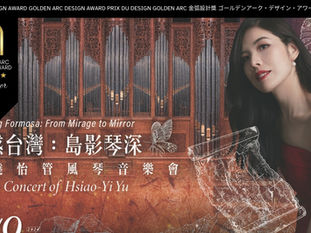
Tradition Reimagined: Anna Vienna Ho on Creating a Global Opera Experience
Anna Vienna Ho has been awarded the Diamond Prize in the Original Composition category at the Global Best Creative Awards 2025 Season 1 for her innovative opera The Monster of Gao Village, inspired by the iconic Chinese novel Journey to the West.
The opera reimagines one of the many tales from the classic novel, blending comic adventure with philosophical depth. “Journey to the West is rooted in Chinese folk religion and philosophy, yet it tells its story with humor and vivid characters,” Ho explains. “This balance of seriousness and playfulness made it a perfect fit for the operatic form.”

What sets The Monster of Gao Village apart is its cross-cultural musical language. Ho fuses traditional Chinese instruments, melodies, and scales with contemporary Western operatic form, creating a dynamic dialogue between East and West. “I wanted to capture a unique beauty—something that harmonizes cultural traditions without compromising operatic storytelling,” she says.
While the opera maintains a modern Western performance style, Ho introduces visual elements drawn from Chinese theatre, such as Kung Fu movement and gesture-based storytelling, offering audiences both familiarity and discovery. The work is sung in English, paired with traditional Chinese costumes, making it accessible while still honoring its cultural roots.
With The Monster of Gao Village, Ho hopes to promote Chinese literature and cultural heritage through opera, especially to new and younger audiences. “This story reflects traditional Chinese values and virtues. By presenting it in a new operatic voice, I hope to keep that legacy alive—and make it resonate for global audiences.”
Full Interview
What inspired the setting or context of this work?
My opera The Monster of Gao Village was adapted from a story in the Chinese novel Journey to the West. The novel is rich in cultural and philosophical themes, deeply rooted in Chinese folk religion, mythology, and various philosophies like Confucianism, Taoism, and Buddhism. I appreciate how it portrays the journey of Tang Monk, Sanzang, and his disciples—the Monkey King, Pigsy, and Sandy—as they seek sacred scriptures. While the themes are profound, the narrative itself is a comic adventure filled with colorful characters. This blend of seriousness and humor lends itself well to the operatic format. The dynamic interactions among the characters provide excellent opportunities for musical expression and offer a rich tapestry of roles across different voice types.

Is there a particular element or detail in the piece that holds special meaning for you?
In my opera The Monster of Gao Village, I blend traditional Chinese and Western musical styles. I incorporate Chinese instruments and percussion throughout the piece, while also utilizing traditional melodies, folk tunes, and musical scales. By creating a dialogue between these two groups of instruments, I aim to achieve a unique beauty that harmonizes traditional Chinese music with contemporary Western influences.

Was there a specific concept or influence that guided your creative process?
Some composers incorporate elements of traditional Chinese theatre, such as singing styles and performance practices, into their works. While I plan to include some Kung Fu movements, like stick fighting skills and traditional gestures, I chose not to adopt other aspects of traditional Chinese theatre. My goal is to maintain a "modern Western operatic" style. In terms of acting, singers will perform similarly to those in other contemporary operas, and vocally, it will follow the conventions of standard Western opera.

What do you hope audiences take away from experiencing your work?
I aim to introduce opera to new and younger audiences, promoting Chinese literature while developing an exciting blend of Chinese and Western contemporary opera. The Monster of Gao Village reflects the lives of the Chinese people during that period and showcases the virtues of traditional Chinese society. The opera is written in English and features traditional costumes, making it easier for the audience to understand this epic story.







